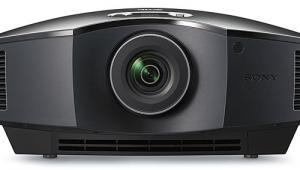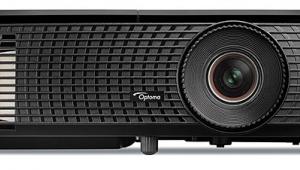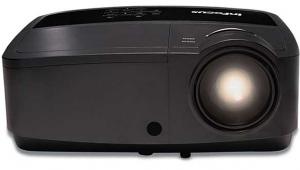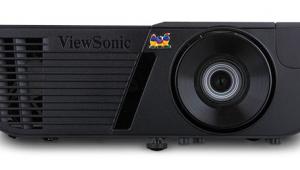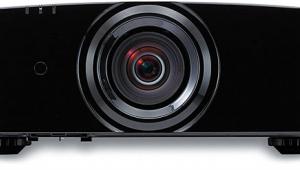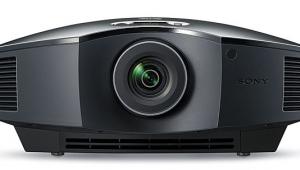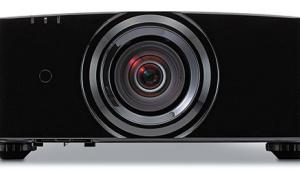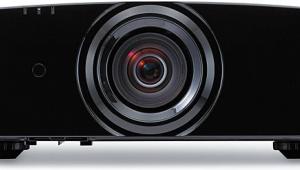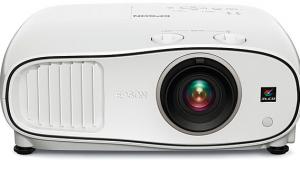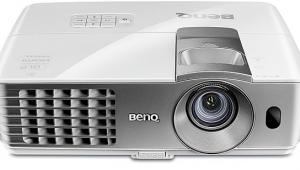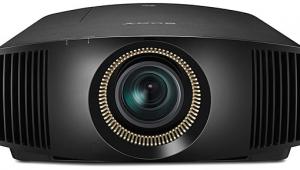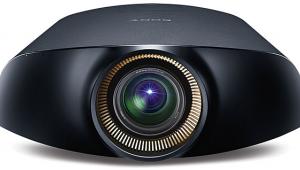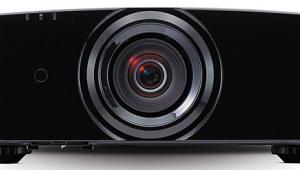In your HT Labs Measures of the JVC DLA X30 what was the
the minimun Black level luminance in ft-L.?
JVC DLA-X30 3D LCOS Projector

Last May, I had the pleasure of reviewing the first 3D projector offered from JVC, the DLA-X3. At just under $4,500, it represented an amazing balance of value and performance. This year, JVC has made some radical changes to its projection line, including two new projectors with its e-Shift 4K upscaling feature. Replacing last year’s DLA-X3 is the DLA-X30, which adds lens memory to the package along with some new 3D options. But the biggest news is that JVC has lowered the price by almost 25 percent. So does last year’s amazing value become this year’s doorbuster? Let’s find out.
Wolf in Sheep’s Clothing
The DLA-X30 is a 3-chip, 1080p, 3D projector that uses three of JVC’s D-ILA panels. D-ILA is JVC’s take on Liquid Crystal on Silicon (LCOS), which is also what Sony uses with its SXRD variant. This is a reflective technology that has a higher fill ratio (less space between the pixels) than LCD and DLP, and a much higher native contrast.
The DLA-X30 is very similar to the previous DLA-X3 in fit and finish, but there have been some cosmetic changes that I’m sure have to do with that price drop I mentioned. The most notable is the finish. Last year’s model featured a glossy black case that gave the chassis a piano black look. This year’s has a matte finish that doesn’t have the shine (or the fingerprints) that we saw with the X3. JVC has also eliminated the motorized door that slides in front of the lens. While I was a fan of the door (it keeps the dust out), it is certainly not a make-or-break feature. Everything else appears to be the same, including the button layout, connections, and general operations.
The back panel includes two HDMI inputs (v1.4a), a component video input, and an RS-232 port. You also get some trigger outputs and a 3D-synch port for JVC’s 3D emitter. Unfortunately, the DLA-X30’s purchase price does not include that 3D emitter, or the 3D glasses required for 3D playback. JVC did however include the new emitter (PK-EM1, $79) and updated glasses (PK-AG2, $179) in our review package. The new glasses have a slightly smaller lens and are lighter. They also feature an on/off switch; last year’s glasses would power on automatically when they sensed a signal and turn off when it disappeared. I actually preferred the weight and fit of the older glasses to the new ones, but performance-wise they seemed to be about the same. These new glasses may work better for those looking for a smaller pair with a lighter fit.
Setting up the DLA-X30 was a breeze. All of the JVC projectors feature motorized zoom, lens shift, and focus, allowing for easy installation in most home theaters. JVC provides internal patterns for all the lens functions, or you can turn them off and use your own setup patterns for dialing in the image. The internal test patterns were adequate for getting zoom and lens shift right for setup, but I used my own patterns for focus. The 2x-zoom lens focuses quite nicely, and the X30 was able to focus better than most of the projectors I’ve reviewed lately at or near this price point. Its pixel-level focus was even sharper than the recent Sony VW-VPL95ES I reviewed in March at over twice the price! Convergence of the red, green, and blue imagers was decent, but not spot on. Convergence on the left side and center of the screen was almost perfect, but the right side showed nearly a full pixel of red out from the grid. This was barely noticeable at my normal seating distance. I’d recently looked at another X30 a friend owns and its convergence was perfect across the screen, so obviously there will be some variation from unit to unit. Like earlier JVC projectors, the X30 has only a global convergence adjustment, and it cannot move the colors less than a full pixel at a time. That’s fairly coarse. JVC’s new, higher-end projectors, such as the DLA-X70 reviewed last month, offer finer convergence adjustments, both global across the entire screen and by zones.

Uniformity in white and black was excellent all around. This unit didn’t show any of the bright-corner issues I see at times with LCOS designs. The projector also didn’t display the streaking around bright objects that I saw with the X3.
New to this year’s line is the ability to have three separate lens memories. We’ve seen this on other projector designs over the last couple of years, and it does afford some nice options for home theater playback. Most notable is the ability to support a constant image-height screen. Using a 2.35:1 screen provides a wider image area, and the X30 allows you to zoom a 2.35:1 image to fill it while zooming in for a traditional 16 x 9 image. You could also use two screens, depending on how elaborate you want your setup to be. The X30 supports the use of an anamorphic lens with its internal video processing, even with 3D sources, but using the lens memory provides the ability to do a setup that is cheaper than an optional lens. I only had the chance to use the X30 with my 16 x 9 screen, but I did play around with the lens memory function and it worked pretty well. It records all the steps involved with the shift from one position to another, including zoom, focus, and lens shift, so it can take a bit of time to switch.
JVC’s onscreen menus appear the same as the X3’s, with some minor exceptions. In the picture setup’s advanced menu, there were some new options for 3D. This includes Parallax Adjustment and Cross Talk Cancellation (ghosting). Unfortunately, I didn’t find much value with either of them. The Parallax feature allowed me to temper some of the ghosting I saw with 3D images, but it would only fix the ghosting in one depth while making it worse in another. The ghosting adjustment menu had settings for colors and white level, but they didn’t do anything to reduce the ghosting I saw. They did make things brighter, so if you’re finding your 3D image too dim, this may be an option to brighten things up.
The DLA-X30 provides options for dialing in the grayscale and gamma. The Standard setting of the Gamma control was reasonably good, but I had to use a higher setting of the Gamma control to get the most ideal gamma tracking. I obtained a reasonably accurate grayscale with the Natural color profile and the 6500 color temperature preset, but the 6500 setting still benefitted from a little calibration work. The projector offers both high (Gain) and low (Offset) controls in a Custom menu to balance the grayscale using the color temperature presets as a starting position.
- Log in or register to post comments



Thanks Kris for your response, I will check later your chances in HT Labs section, and thanks for this great review!
Last question: You think what the black levels of this JVC dla x30 (properly calibrated in a bat cave, totally black walls, ceiling and dark carpet and without windows) will rival the black levels of hdtv's like the Sharp elite or Pioneer Kuro?


Thanks Kris for your advice and response!!!


Kris:
Great information. It sounds like this is now the way to go.
What about ambient light? I'm watch a lot of movies, but I also like to watch sports. Could daytime viewing be an issue? Many reviewers tout the Epson 5010 because of the brightness. What do you think?
For this projector, what screen would you suggest in the under $2K range? And what about $2-$3,500 range?
Finally, should I just pull the trigger or - like Apple - are projector roll-outs primarily in the fall?
Thanks,
Randy


Hi Kris,
I am new to the projector world... having recently gutted my home theater room that featured an older pioneer plasma. I have created a true black-out theater... no uncontrolled ambient light and ultra flat black walls. I am primarily interested in 2D movies via blu-ray (80%) and movies from Comcast onDemand HD (20%)... with the possibility of some HD sports from time to time.
I installed a 2.40:1 (108" diagonal) 1.0 gain carada screen and a Panasonic AE 7000U about 13 feet from the screen --- primarily because it has solid reviews all around and has the lens memory capability. I've had the projector about 1 week. I like it. BUT, I can seem to dial in the focus as many movies appear to be slightly out of focus. I find it to be a sticking point. I also find the iris/fan noise to be slightly distracting. Not too bad when the speakers are in full bloom... but the high-pitched whirring sound is a little distracting at times.
I just ordered a JVC RS45 (which I believe is the X30). I'm wondering if you could comment - seeing as though you've obviously played around with a lot of these projectors - about why the RS45 might be a better choice.
A couple of questions:
(1) Do you think I will find a better ability to dial-in the focus on the picture coming from the RS45?
(2) Also, I really like the fact that the Panasonic has a built-in masking system that eliminates black-bar over flow on movies that are zoomed-in to fill the 2.40:1 screen. Does the JVC offer something like that?
(3) Did you notice a blue tinge in dark blacks on the RS45 when you tested it?
I originally dismissed the RS45 because it is slightly more expensive, has a lower lamp life, got dinged on 3D capability (even though that doesn't matter a whole lot to me) and doesn't have complete color management controls. But, it seems like many regard it's 2D capabilities to be really great... so, in a hope that I might gain some control of focus, I'm hoping it is slightly more detailed in the picture department.
Would love to hear your thoughts!
Thanks!

I’ve been searching for some decent stuff on the subject and haven't had any luck up until this point, You just got a new biggest fan!..
debt consolidation loan

